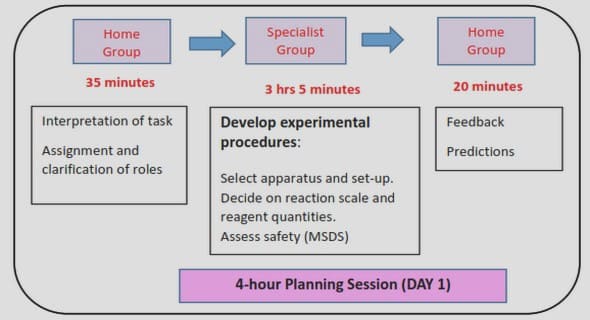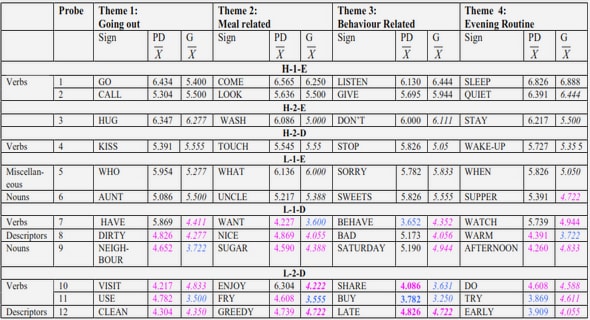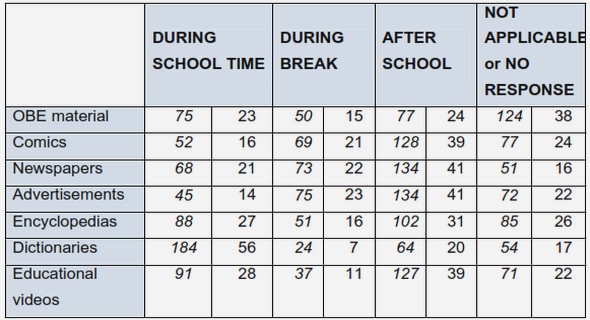Get Complete Project Material File(s) Now! »
Chapter 2: Review of the related literature
Introduction
Open and Distance Learning (ODL) has unique features that make it different from the traditional conventional classroom mode of delivery. One feature is that ODL is flexible and learner freedom is emphasised, with no barriers regarding gender, age, time and other factors (COL, 2000). This flexibility means that learners study at their own pace, own time and place of choice. The primary mode of delivery in most developing countries like Botswana is print, unlike in developed countries such as the United Kingdom where computer conferencing and other technology is key (COL, 2000). Basaza, Milman, and Wright (2010) support this view when they posit that Globally, distance learning makes use of information and communication technologies (ICTs) to deliver learning opportunities as well as to provide access to resources and to facilitate interactivity. However, distance learning in Uganda is dependent on printed modules with supplementation by face-to-face sessions (p.87)
Study materials that offer learners academic support are also sent to learners and may include audio and radio programmes. These have, nonetheless, proved to be no match for the high technology used in the developed countries such as the introduction of podcasting to distance education to reduce isolation as well as to promote inclusivity, as argued by Lee and Chan (2007).
Many countries, Botswana included, use the open and distance learning (ODL) study mode to address challenges facing their citizens. This is because ODL has proved to be able to absorb and reach out to a large number of people at the same time (Siaciwena & Lubinda, 2008; Reed, 2010; and Stewart and Lopes, 2015). Hence the philosophy of ODL is growing in popularity in the developing world. However, there is a gap in the literature on the accessibility of print materials used for ODL. Studies including works of Lee and Chan (2007), and Basaza, Milman and Wright (2010) provide literature on using print materials in ODL. Despite this, it still remains to explore the effect the materials have on learners, especially in a developing context. In this chapter, therefore, I review the literature related to the development of ODL in a developing context. I also discuss the design and development of effective and interactive ODL print study materials for both developed and developing contexts. In this chapter I again look at the Cognitive Load Theory and how it could contribute to development of highly appropriate and effective print study materials that can facilitate knowledge acquisition and academic progression of learners. I then discuss the Theory of Instructional Dialogue and how ODL material developers can use it to develop highly interactive, engaging and conversational study materials.
The next section discusses the background of ODL in sub-saharan Africa.
Background of open and distance learning in sub-saharan Africa
One can argue that ODL is a “modernised” version of what used to be correspondence studies of the nineteenth and twentieth centuries. During that period, study was mainly done through postal mail services (Mphinyane, 1999). Today many institutions are beginning to use ODL as it has vast advantages, as observed by (Mphinyane, 1999; Sibomana, 2014; and Stewart and Lopes, 2015). One merit of ODL is that it has the potential to increase access in enrolments more substantially than the traditional face-to-face mode. Basaza et al. (2010) and Stewart and Lopes (2015) explain that distance education may be useful in addressing enrolment space pressures experienced in conventional or face-to-face institutions. This is corroborated by Nage-Sibande (2011) who made an observation that the Southern African Development Community (SADC) region may take full advantage of ODL to improve its access as the region seems to be one of the hardest hit by the acute problem of low enrolments to higher education. Well known ODL institutions today include the Open University of UK (OUUK), Zimbabwe Open University (ZOU), Open University of Tanzania (OUT), University of South Africa (UNISA), Indira Ghandi National Open University (IGNOU), Botswana College of Distance and Open Learning (BOCODOL), Namibian College of Open Learning (NAMCOL) and Open University Mauritius (OUM). The majority of ODL institutions in Africa use mainly print to offer their instruction. Others, however, have started the use of technology to augment their print materials. This, however, cannot match ODL institutions in Europe and other parts of the developed world as their programmes are mainly either blended or wholly offered online, showing superiority on their use of technology to offer instruction such as Namibian College of Open Learning (NAMCOL), Open University of Tanzania (OUT) and Kigali Institute of Education (KIE). This means that such institutions – which include Herzing in the USA, Queensland in Australia, IE in Spain, Tallinn in Estonia, Keele in the United Kingdom, Middlesex in the United Kingdom and Edinburgh in the United Kingdom, amongst others, have a much better reputation compared to most of our African institutions with the same mandate. Since one does not necessarily have to leave one’s work place to pursue one’s education, many people are enrolling with ODL institutions, (Mphinyane, 1999; Sibomana, 2014; Stewart and Lopes, 2015). Perry (1981) made an observation that one way of studying effectively and conveniently is to use distance learning as it does not require people to take time off work and reduce the gross national product, and does not require capital buildings.
Governments on all the continents the world over, have declared initiatives to guide them in their attempts to focus on education. These initiatives include Education for All (EFA) – 2005 to 2015; Millennium Development Goals (MDGs) – 2000 to 2015; UN Decade of Education for Sustainable Development – 2005 to 2014 and many others not mentioned here. Botswana is a signatory to all these agreements. Peppler-Barry (2000) has argued that EFA, with 164 signatories, emphasises commitment to universal primary education (UPE) which is ten years of basic education. In Botswana this is made up by seven years of Primary and three years of junior certificate schooling. The Dakar signatories have also pledged to offer quality education to all their citizens, especially children and adults from ethnic minority groups. In addition to these frameworks, UNESCO has advocated global implementation for sustainable development, Adeyemi (2008). All these efforts are in line with the belief that for national development to be seen to be on course, people should be developed to enhance the country’s human resources. Republic of Botswana (1993, p.19) succinctly encapsulates that “the nations’ major human resource is its people and that investment in their education and training is a necessary condition of national development.” Basaza et al. (2010) further argue that the majority of distance learners enrol in distance education in order to obtain a qualification and/or a promotion. They want to update their knowledge and skills. Some enrol in distance education courses with the attitude that distance education is easy because they can learn at their own pace; however, distance learning requires self-discipline and self-management (p.88).
This, in my opinion, confirms that the countries’ human resources can be developed through ODL. However, despite its great potential to contribute to national development, open and distance learning in many developing countries still experiences challenges as most people still prefer conventional schooling. The Republic of Botswana (1994, p.10) made an observation that Out-of-school education is a complex area in view of the wide variety of client groups it caters for. The current situation reveals that the various providers of out-of-school education operate parallel to each other and the quality of the programmes is uneven. This sector lacks the status and recognition it usually enjoys in developed and some developing countries. This sector also lacks a comprehensive policy as it was left out of the Government Paper No. 1 of 1977 with a view to preparing a separate policy which was never done.
Basaza et al. (2010, p.89) further note that for distance learning to be embraced in countries where it is implemented, “Lecturers must receive training in on-campus and distance instructional methods and learning strategies. Distance teaching will not be recognised as a profession until it is treated as such and individuals who lecture are required to obtain training and to receive some form of certification.” This may improve quality in the provision of ODL which could encourage positive attitudes to distance education. Well trained distance education tutors have to be able to meet the demands of learning objectives. Learning objectives are statements “that tell what learners should be able to do when they have completed a segment of instruction … Learning is a cognitive process that leads to a capability that the learner did not possess prior to instruction” (Smith & Ragan, 1999, p.84). Objectives assist the instructional designer as they “provide a focus of the instruction, guiding the designer in making decisions about what content should be included, what strategy should be used, and how students should be evaluated” (ibid). Learning objectives also serve as a focus of communication in a situation where a number of role players are involved in designing instruction, that is, content experts, graphic designers, content editors and others (Smith & Ragan, 1999). These objectives, classified according to the learning outcomes required are discussed further in the next session.
Concept objectives should “reflect the learners’ ability to classify and label ideas, objects and events as examples/non examples of a concept. They may require that the learner state how/why such classification was made” (Smith and Ragan, 1999, p.86). Examples of verbs for concept objectives include identify, explain and give examples (ibid). Smith and Ragan (1999, p.86) further state that principle objectives “should reflect the intention that the learner can use the principle to predict, explain, or control something. The objectives may require that learners explain their application of the principle … these are high order learning objectives as they may ask leaners to recognise whether a rule was correctly or incorrectly applied, and tell why or why not.” Examples of verbs for principles are identify and manipulate to create equivalent settings.
Procedure objectives involves using verbs such as adjust, solve and many others “describe what learners can do to demonstrate that they successfully completed a procedure defined by a procedural rule” (Smith & Ragan, 1999, p.86). Problem solving objectives use verbs such as assess, determine and synthesise to reflect the procedure required by the learner while psychomotor objectives facilitate development of psychomotor skills and they mainly reflect what new activities are required, for example, number of words per minute that a learner can type (Smith & Ragan, 1999).
Smith and Ragan (1999) are also of the view that when designing or developing ODL study materials, designers should adhere to five categories of possible learning outcomes. Smith and Ragan (1999) put it their way that “declarative knowledge objectives need to reflect whether learning will be recognition, for instance, choosing from given options, or recall, verbatim or paraphrased, and listed or summarised” (Smith & Ragan, 1999, p.86). They gave the following as examples of declarative knowledge objectives: match, summarise, define, list and describe. Declarative knowledge is similar to Bloom’s level of recall and understanding and declarative objectives here “require a learner to recall in verbatim, paraphrased, or summarised form of facts, lists, names, or organised information. Learners are not required to apply the knowledge that they have acquired but merely to recall, recognise, or state it in their own words” (Smith & Ragan, 1999, p.66). Intellectual knowledge of skills, unlike the declarative knowledge, is similar to Bloom’s levels of application, analysis, synthesis and evaluation. It is here that students “learn how to not only recall, but also apply knowledge to instances not encountered during instruction,” (ibid). An example of intellectual skill is given as discrimination skill by Smith and Ragan (1999) and shares that it involves acquisition of concepts which help learners to simplify the world (ibid). Cognitive knowledge represent changes in cognitive capability (Smith & Ragan, 1999). Smith and Ragan (1999) warn that designers of ODL study materials should avoid ambiguous terms such as understand, be aware of, appreciate and become familiar with, when developing materials. Cognitive strategies, according to Weinstein and Mayer (1986) in Smith and Ragan (Eds., 1999), maintain that here are five major categories of cognitive strategies. Rehearsal strategies are “used for basic learning tasks and complex learning tasks that aid in selection of information to be recalled and enhance retention of that information,” Smith & Ragan, (Eds., 1999, p.68) while elaboration strategies are used to introduce basic learning tasks and complex learning tasks that link the new information to what is already known by learners. Smith and Ragan (1999) explain that organisational strategies are “used for basic learning tasks and complex tasks that select information to be retained and define the relationships among this information so that it may be integrated into memory” (p.68), while comprehensive monitoring strategies, also called meta-cognition, involves “ … students’ knowledge about their own cognitive processes and their ability to control these processes by organising, monitoring and modifying them as a function of learning outcomes” (ibid). Affective knowledge is facilitated by affective strategies. Affective strategies are those that learners can use to facilitate attracting and sustaining concentration. These strategies can thus, be used to help eliminate learners’ anxiety and maintain motivation. The cognitive strategies objectives, according to Smith and Ragan (1999), require the learner to assess, select and invent, apply and modify. These can facilitate high order thinking, and deep learning.
Attitudes, like cognitive strategies, “influence learning across content and domains. An attitude is a mental state that pre-disposes a learner to choose to behave in a certain way” (Smith & Ragan, 1999, p.68). Attitude objectives include verbs such as “… choose to solve …, decide to attend … and must reflect what the learner must do to demonstrate the acquisition of an attitude. They may also require that the learner tell why the performance is important” (Smith & Ragan, 1999, p.86).
Gagné (1985) in Smith and Ragan (Eds., 1999) describes attitudes as having cognitive, affective and behavioural components that interact, and indicates that attitudes can influence the choices that learners make. He gives an example of a learner who hates Mathematics, who may choose to avoid all courses that have a Mathematics component in them. Instructional designers should be encouraged to deliberately design components into their materials that can encourage positive attitudes. These positive attitudes towards learning can be inculcated in the learning objectives guiding the course developers.
Dedication
Acknowledgements
Abstract
Chapter 1: Overview of the study
1.1 Introduction
1.2 Brief contextualisation of the study
1.3 Rationale
1.4 Scope of the study
1.5 Clarification of key terms
1.6 Research design and methodology .
1.7 Validity and trustworthiness
1.8 Ethical considerations
1.9 Anticipated research constraints
1.10 Outline of the study
1.11 Conclusion
Chapter 2: Review of the related literature
2.1 Introduction
2.2 Background of open and distance learning in sub-sahara Africa
2.3 Theoretical Frameworks: Cognitive Loads Theory and Theory of Instructional Dialogue
2.4 Designing and developing ODL study materials
2.5 Conclusion
Chapter 3: Research design and methodology
3.1 Introduction
3.2 Research paradigms
3.3 Background to research sites
3.4 Instructional materials as unit of analysis
3.5 Participants and sampling criteria
3.6 Instrumentation
3.7 Data collection
3.8 Data analysis
3.9 Conclusion
Chapter 4: Data presentation, analysis and discussions of findings
4.1 Introduction
4.2 Design and use of instructional materials: key role players
4.3 Analysis of instructional materials
4.4 General observations
4.5 Emergent themes
4.6 Conclusion
Chapter 5: Significance and implications of the study
5.1 Introduction
5.2 Overview of the study
5.3 Implications of findings
5.4 Significance of the study
5.5 Limitations of the study
5.6 Recommendations for further research
5.9 Conclusion
References .
Appendices
GET THE COMPLETE PROJECT


